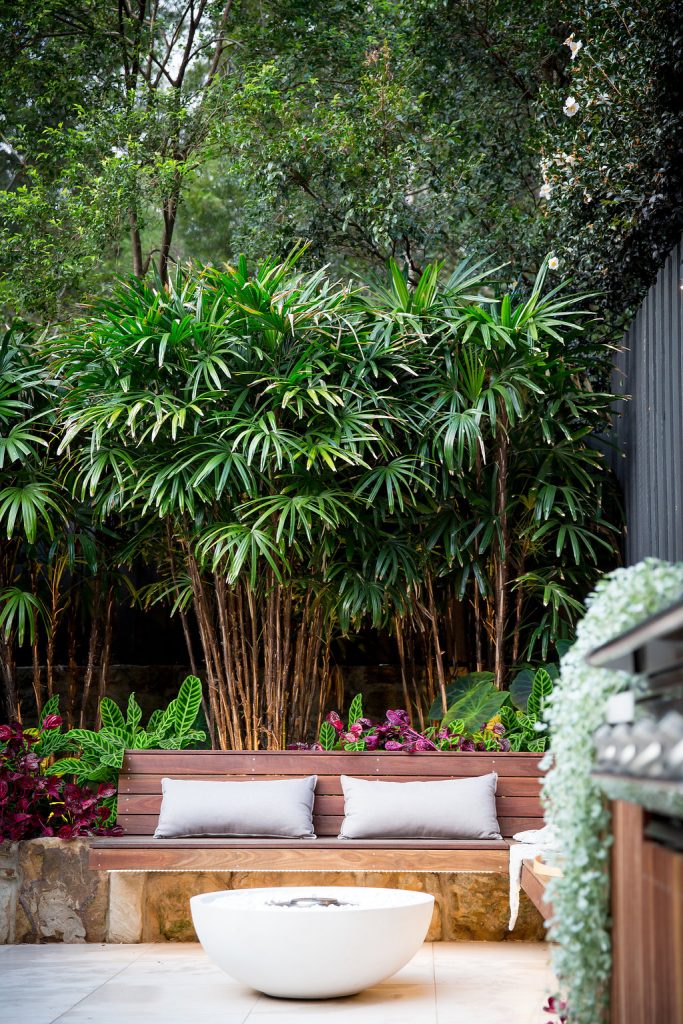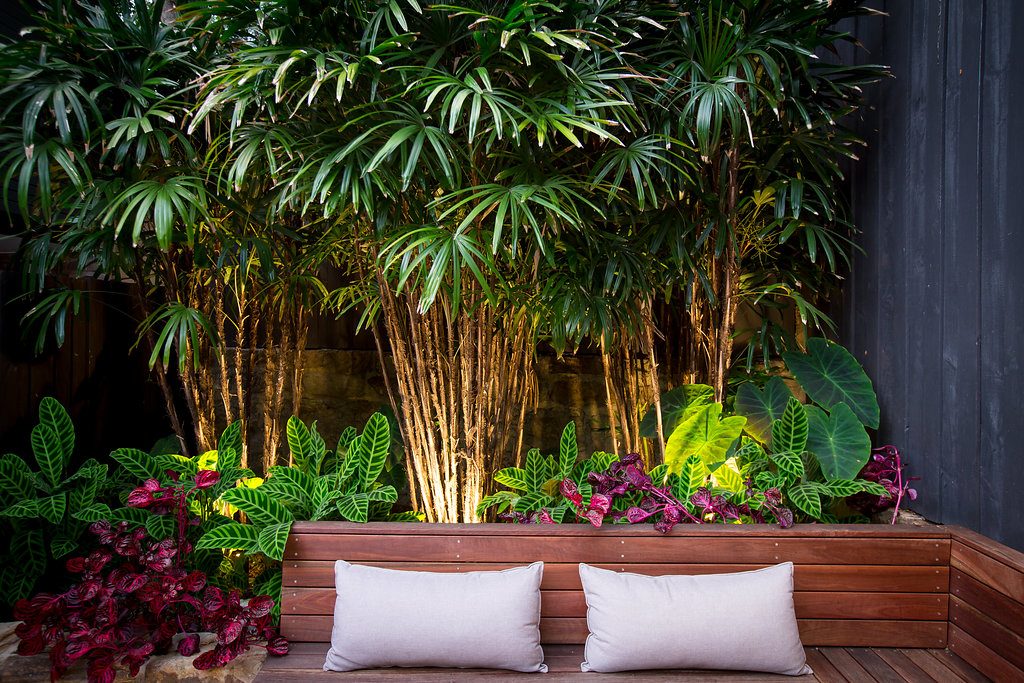Looking for some plant inspiration? Introducing the Rhapis Excelsa or commonly known as the “Rhapis Palm” “Lady Palm” or “Lady Finger Palm” and it’s this month’s feature plant for its striking foliage and its versatility.

The Rhaphis Palm leaf is hand shaped with long, glossy, dark green, fingers. The leaves form a dense layered canopy atop clumps of brown fibrous stems. They grow in a similar fashion to some bamboos, spreading by underground stems called rhizomes. Although they grow at a much slower rate.
These adaptable palms grow at their best in a moist well drained soil in morning sun or light to heavy shade or even indoors. They also do well potted in planters and make a lovely feature plant.
In the right conditions, they can grow up to 3 or 4 meters high although they are relatively slow growers.
Why we Love them
We often include the Rhapis Palm in our garden designs, for their hardy nature and their unique foliage which is rich in colour and feathery texture. They add instant lusciousness to a garden.
Large mature plants can have an architectural quality and look great lit from below using strategically placed garden lights.

They can also be planted about 1m apart along a property line and within a few years will form a surprisingly dense hedge or screen. A welcomed change from some of the more commonly used screening plants such as bamboo, Lilly Pilly or Murraya. They also drop little leaves and are non-invasive when compared to some species of bamboo.
And if the above hasn’t piqued your interest in the Rhapis Palm, be teleported to some far-flung tropical island hideaway (figuratively speaking) when you plant these guys pool side or in a tropical garden setting. Who wouldn’t want that?
